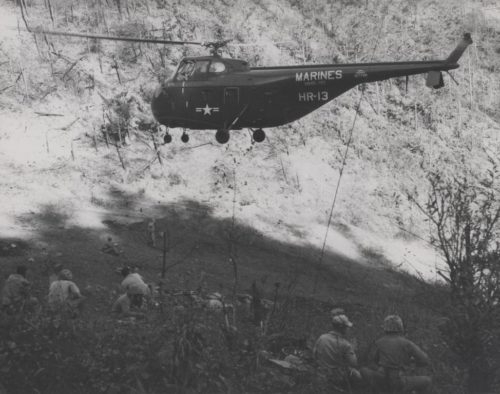September 20 in U.S. military history
1777: British Maj. Gen. Charles Grey launches a daring nighttime attack on Brig. Gen. Anthony Wayne’s Continental Army forces encamped near the Paoli Tavern near modern-day Malvern, Pa.. Grey orders his troops to only use bayonets, and has his men remove the flints from their rifles. The Redcoats catch the Americans completely by surprise, routing an entire division while only suffering 11 British casualties.
1797: (Featured image) The Continental Navy frigate Constitution is launched in Boston harbor. 220 years later, USS Constitution – known affectionately as “Old Ironsides” – is the “oldest ship in the American Navy,” and continues serving in the 21st century as a duly commissioned ship crewed by active-duty U.S. sailors and Naval officers in order to further public awareness of American Naval tradition.
1917: The 26th Infantry Division arrives at Saint-Nazaire, France, becoming the first division entirely organized in the United States to arrive in Europe for World War I. The National Guard soldiers immediately travel to Neufchâteau, where they are trained by experienced French soldiers. The “Yankee” Division will spend 210 days in combat, with 1,587 killed in action and another 12,077 soldiers wounded.
1944: Just three days after landing, the 81st Infantry Division has eliminated most of the Japanese garrison on the island of Angaur. Once the island is secured, the 81st will join the 1st Marine Division in the bloody battle on Peleliu, only seven miles away.
1950: 12 Sikorsky HRS-1 Chickasaw helicopters of Marine Helicopter Squadron 161 (HMR-161) conduct the first combat landing of troops, landing over 200 Marines and their equipment on Hill 844 near Kansong, Korea.
Meanwhile, men of the 1st Battalion, 1st Marines charge up Hill 85, near Yongdungp’o. Leading the attack is 2nd Lt. Henry A. Commiskey Sr., running ahead of his Marines through heavy enemy machinegun and small-arms fire to reach the machinegun nest at the crest of the objective. Armed only with his pistol, he dispatches four enemy soldiers and grapples with a fifth until one of his Marines catches up and gives him another weapon to shoot the foe. Commiskey continues on to the next gun position, killing another two enemies and then rushes to the top of the hill, routing the enemy troops.
For his “valiant leadership and courageous fighting spirit,” Commiskey is awarded the Medal of Honor.

1965: Near Ben Cat, South Vietnam, Sgt. Larry S. Pierce and his reconnaissance platoon are ambushed by an enemy force. They destroy the machinegun and rout the enemy. As the Americans pursue their fleeing opponents, they come across a land mine in a roadbed. Pierce jumps onto the device as it detonates, saving the rest of his squad from being wiped out at the cost of his own life. For his sacrifice, Pierce is posthumously awarded the Medal of Honor.
1984: The Iranian-supported terrorist group Hezbollah carries out a suicide car bomb attack on the U.S. Embassy Annex building in East Beirut, Lebanon. The explosion kills 24 – including Chief Warrant Officer Kenneth V. Welch (Army) and Petty Officer 1st Class Michael Ray Wagner (Navy) – and injures both the U.S. and British ambassadors.
2001: President George W. Bush addresses a joint session of Congress, announcing the newly proposed Department of Homeland Security and requesting a declaration of war in response to the 9/11 attacks just nine days ago. Bush states “Our war on terror begins with al Qaeda, but it does not end there. It will not end until every terrorist group of global reach has been found, stopped and defeated.”

Today’s post is in honor of Marine Sgt. Foster L. Harrington, who gave his life for our country on this day in 2003. Harrington, a 31-year-old native of Ft. Worth, Tex., was killed by enemy action in Iraq’s Anbar province. He was serving with the 3rd Force Reconnaissance Company, 4th Marine Division, Marine Corps Reserve.
